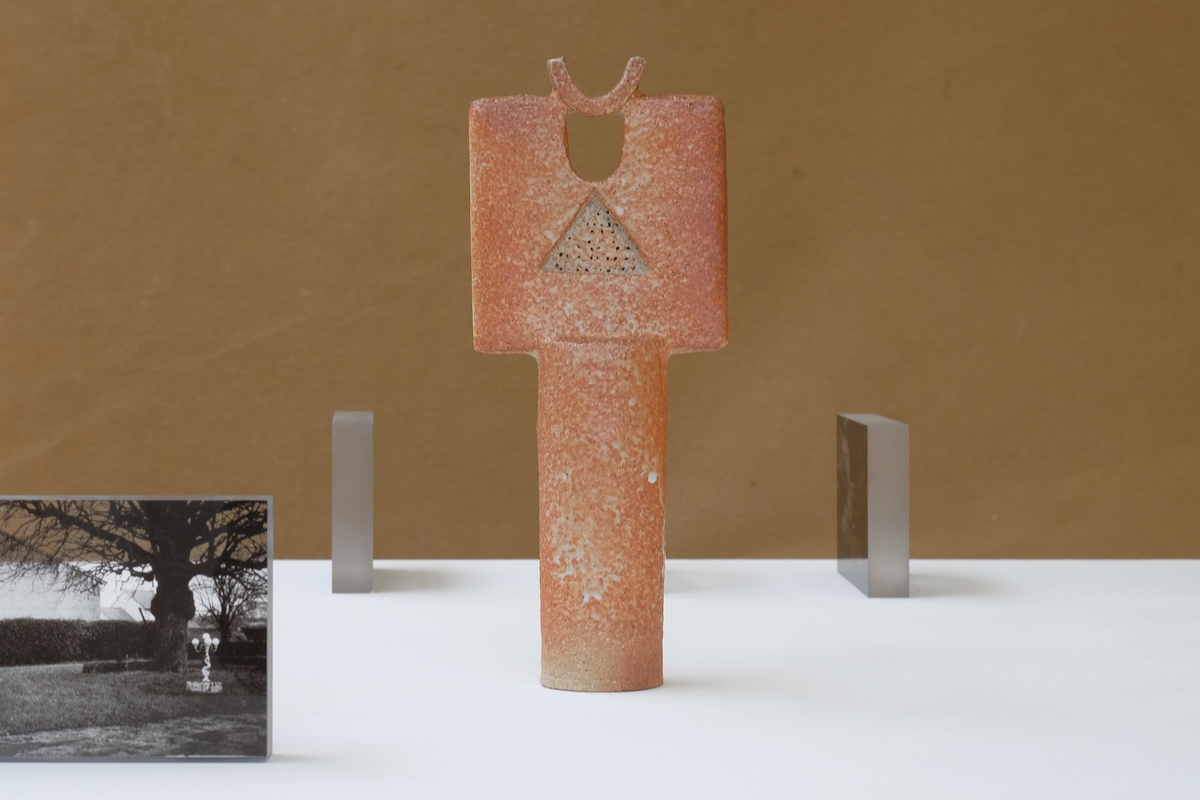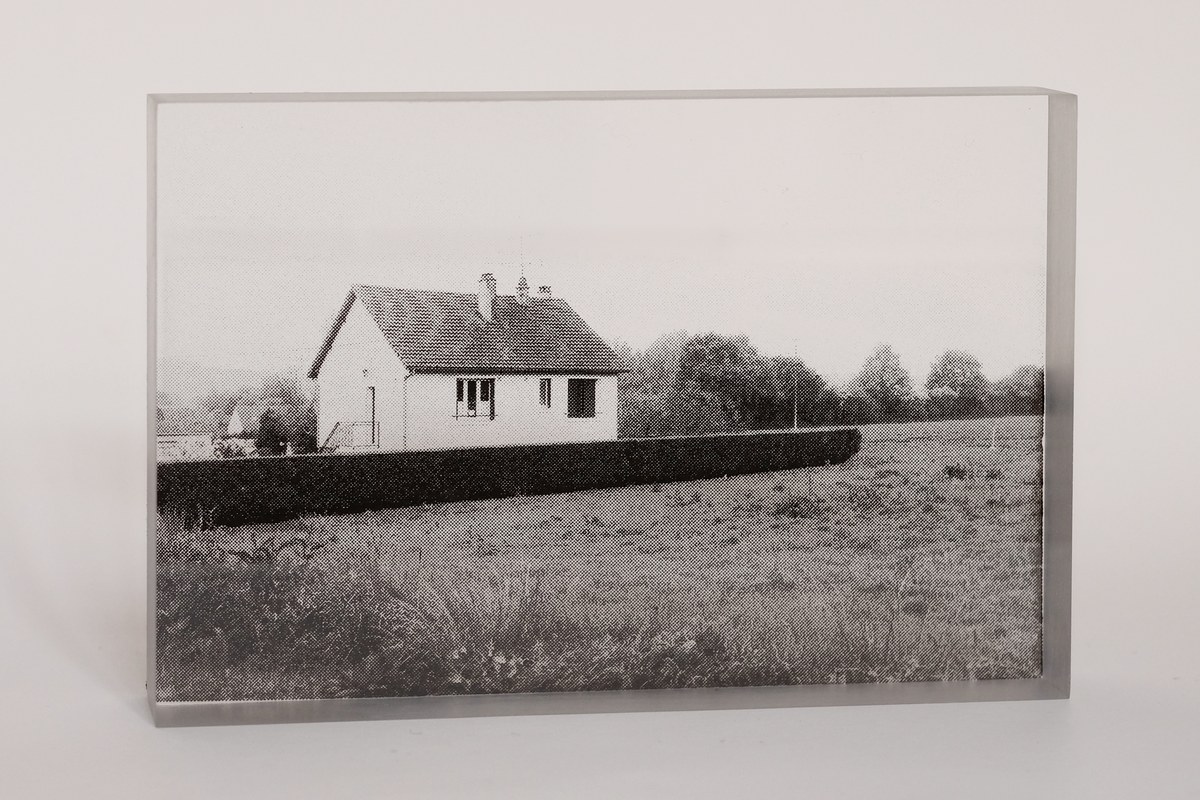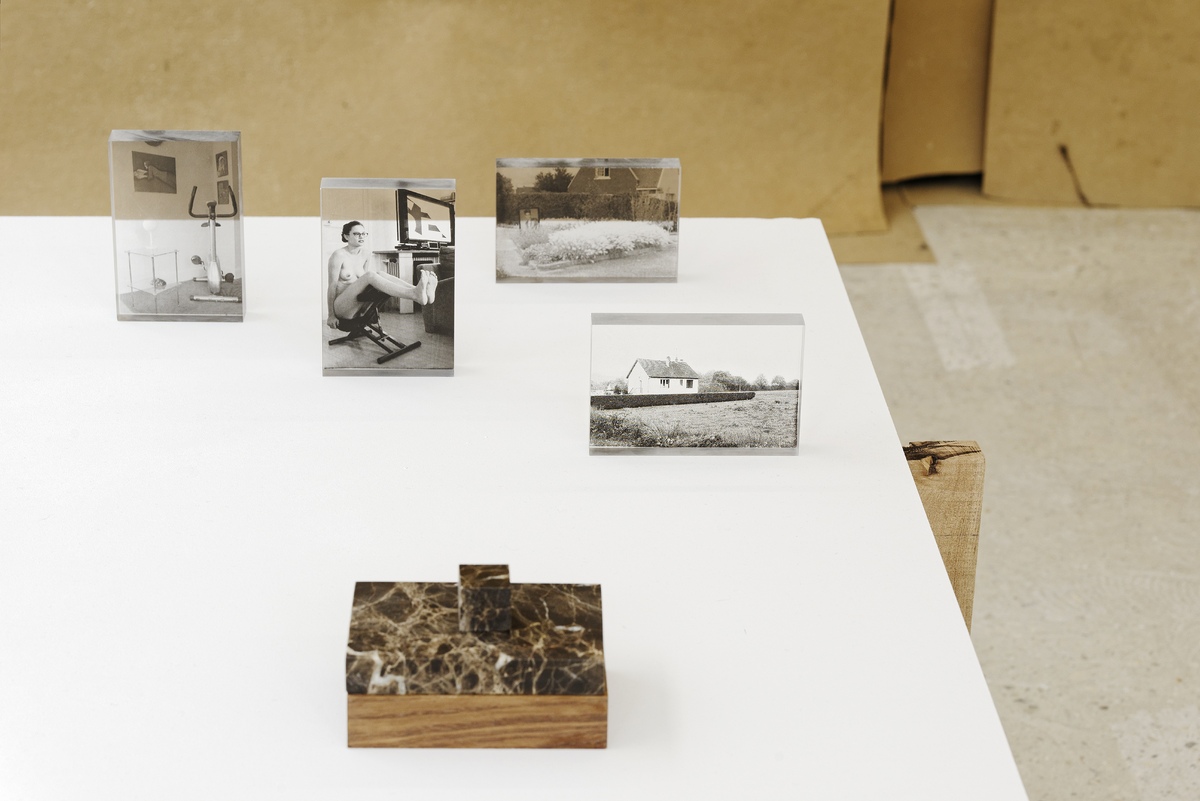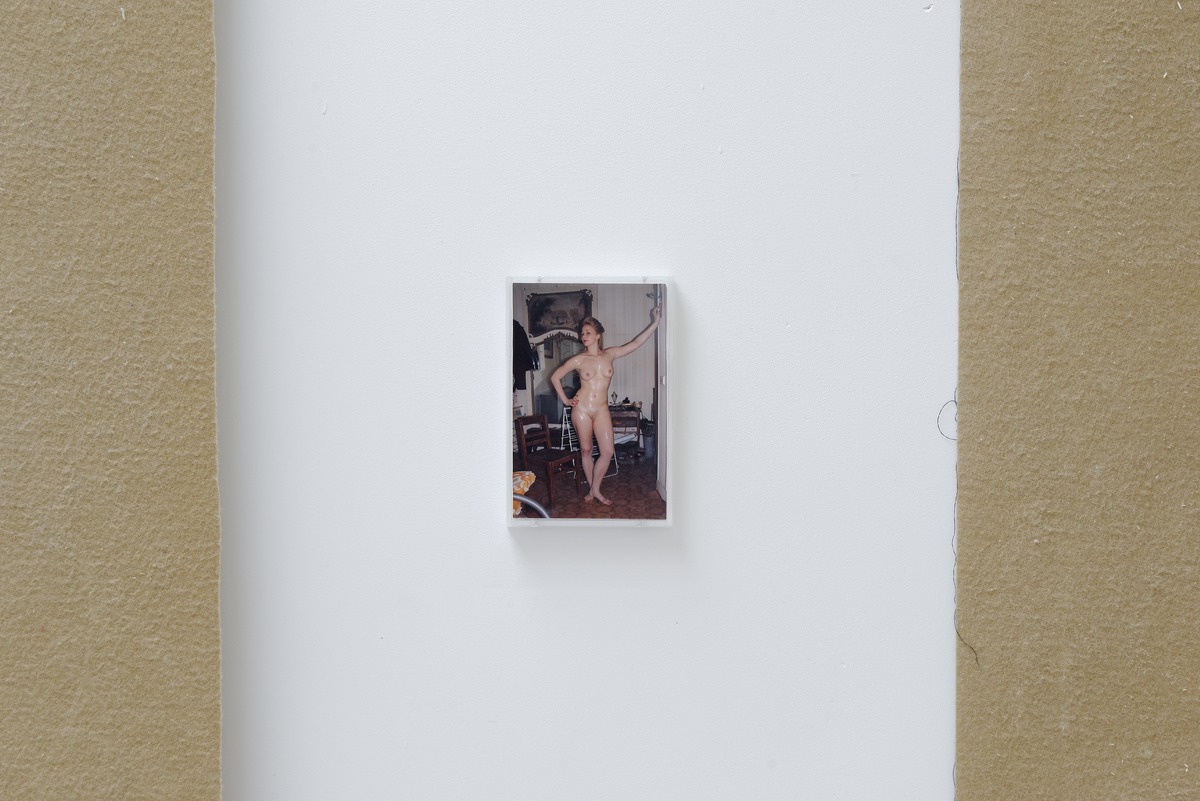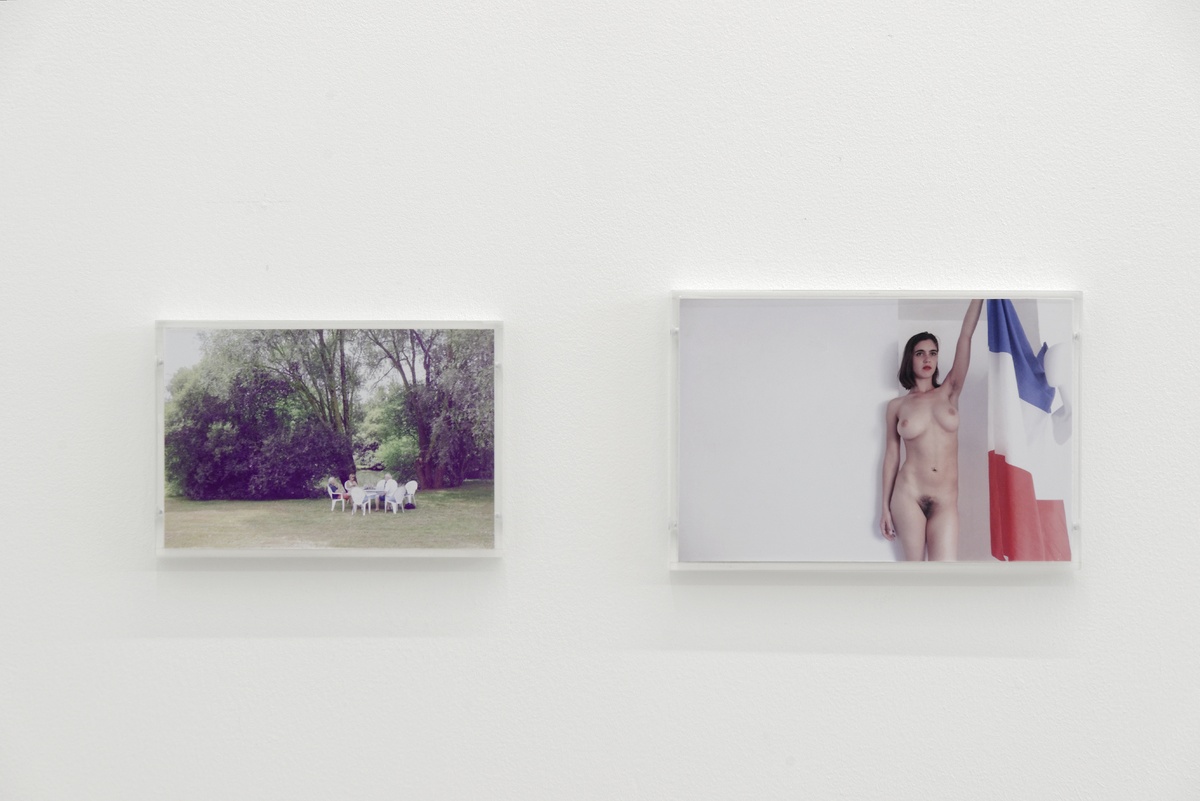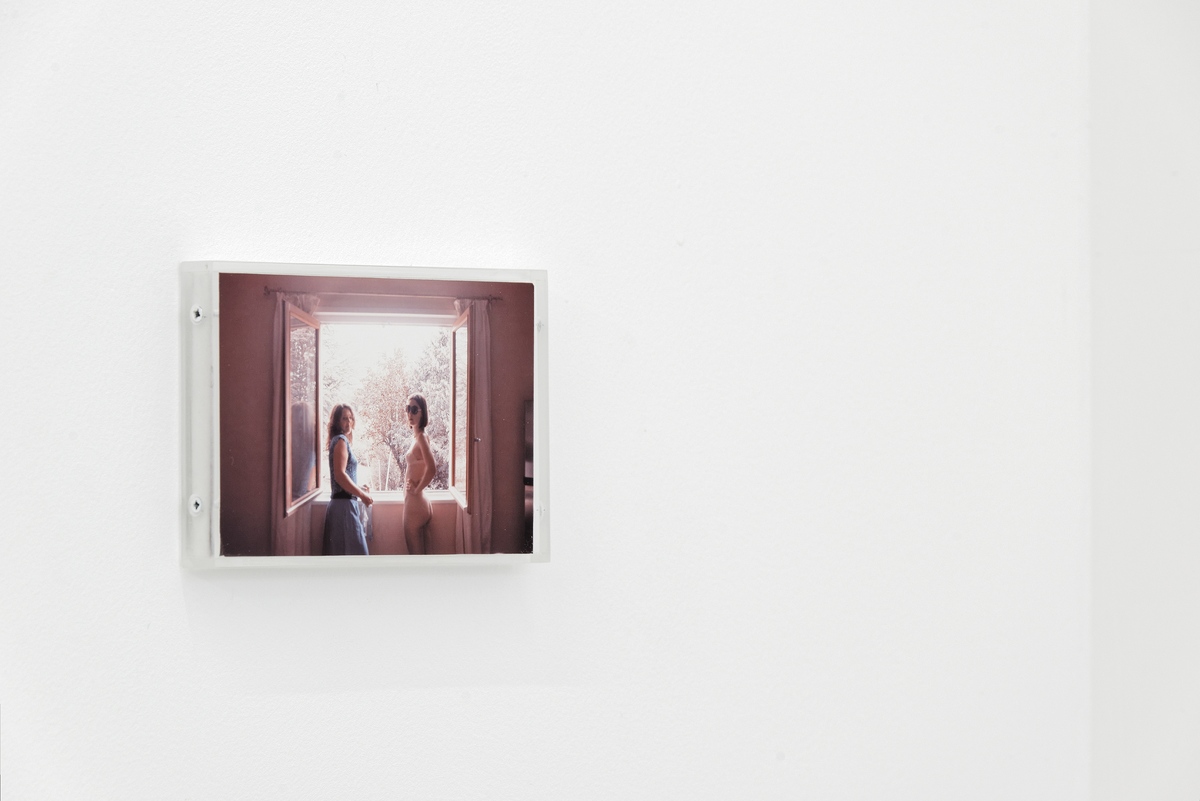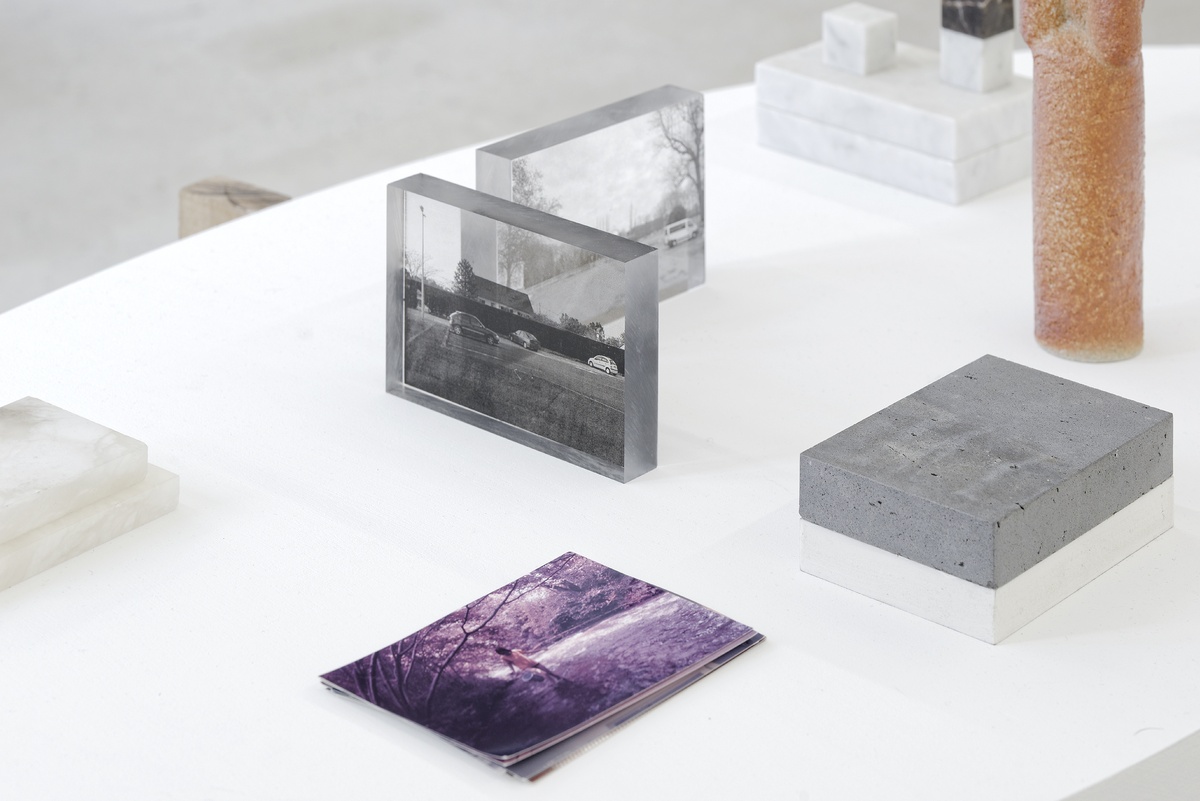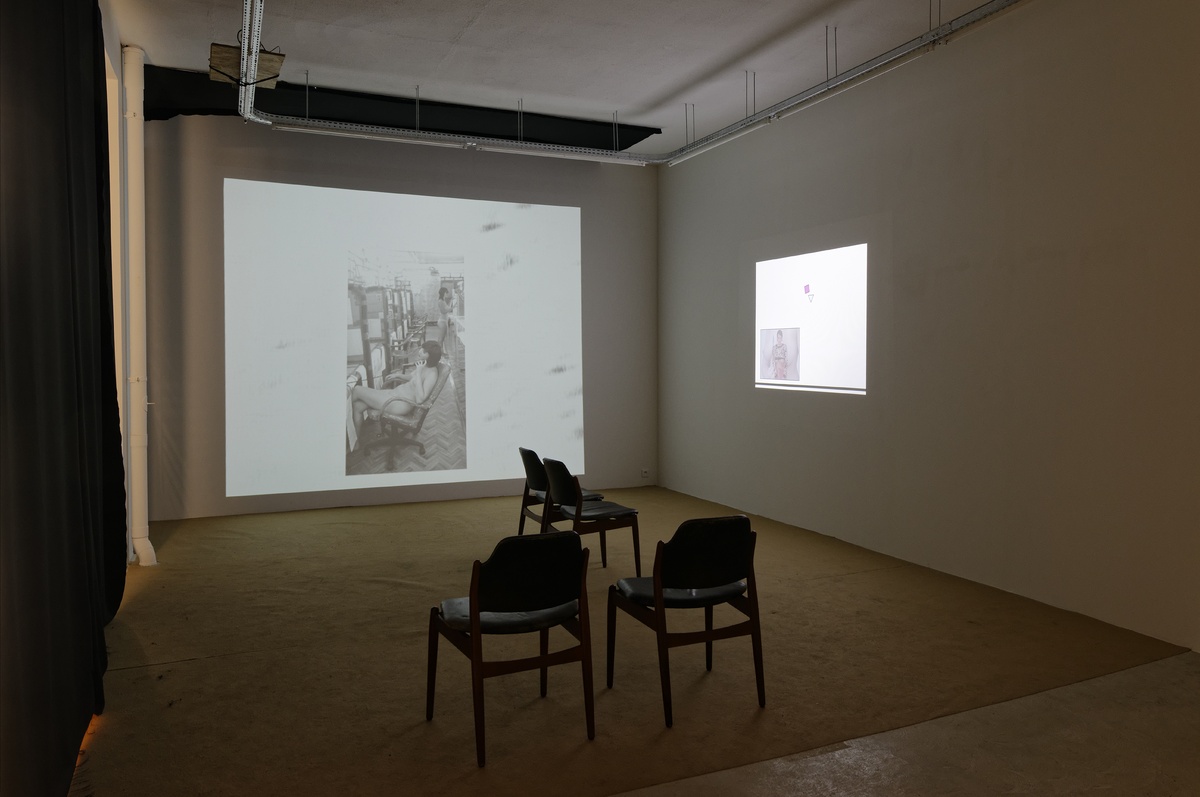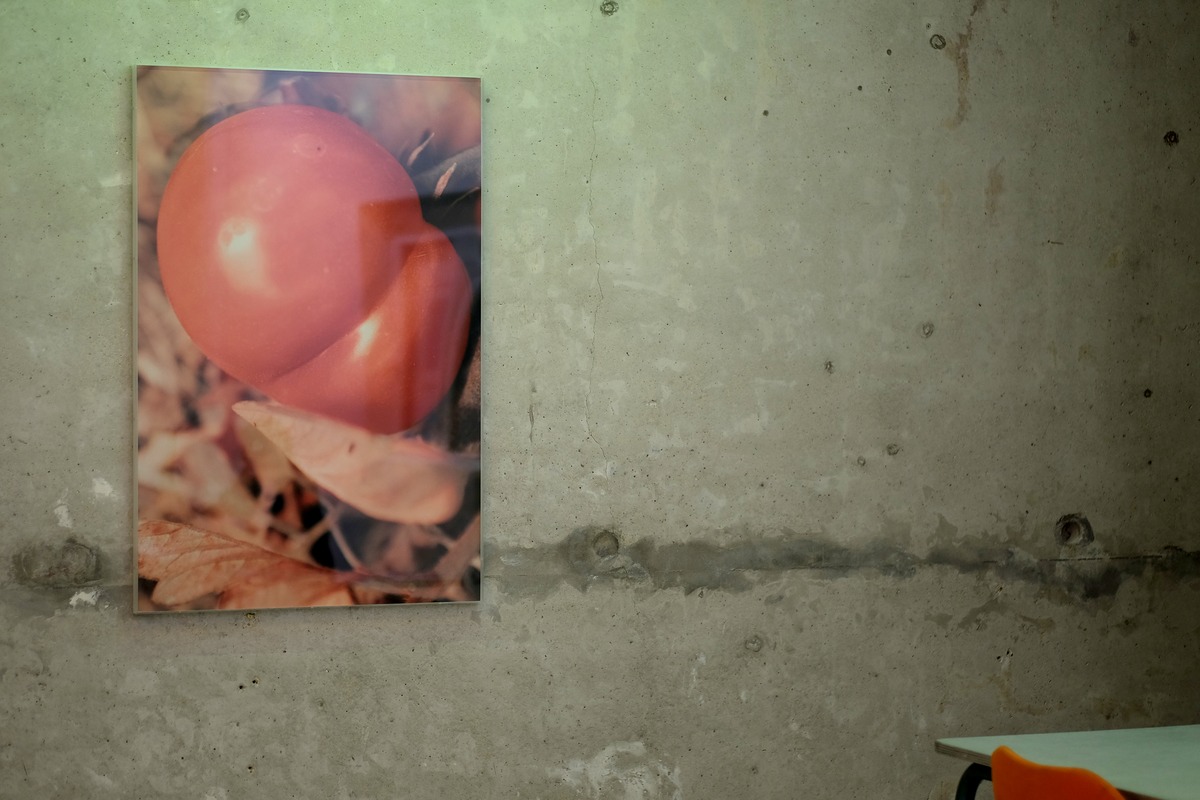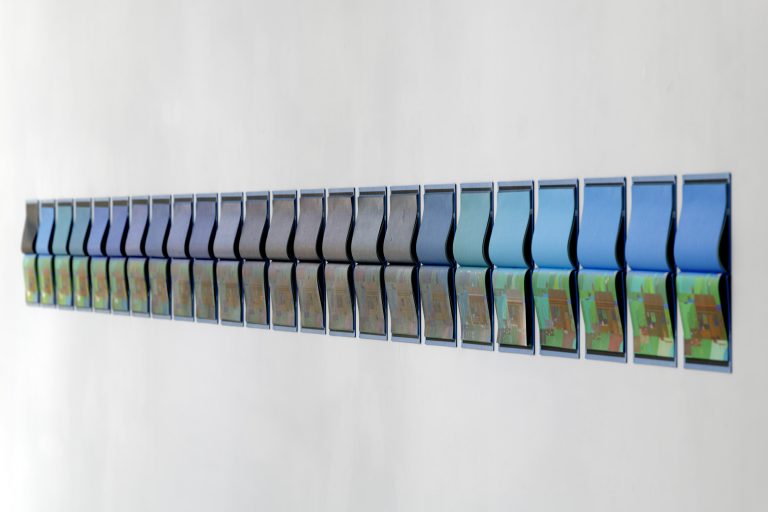Artist: Julien Carreyn (with Ker Xavier, Jorge Mantas, Claudine Monchaussé)
Exhibition title: Photographies du soir
Curated by: Benoit Maire
Venue: Crèvecoeur, Paris, France
Date: March 18 – May 14, 2016
Photography: ©Aurélien Mole, all images copyright and courtesy of the artist and Crèvecoeur, Paris
When he was at high school in Angers, Julien Carreyn used to cut pictures out of the Gazette Drouot (a famous weekly auction sale magazine) or the Courrier de l’Ouest (a local newspaper) and fill notebooks with these found images, organizing them methodically but spontaneously into layouts. It was long before he discovered that this was an art form, as practiced for instance by Hans-Peter Feldmann. As a rave DJ in the mid-1990s, he tried to record just the right sequence on the format used at the time: the 2 X 45-minute cassette. These sound sequences were made using underground records claiming a high degree of stylistic radicality under a cloak of mystery and anonymity.
After working as an art director (for example on erotic books for Taschen), JC focused his activity on image production, drawing and photographs. But whether in his drawings based on found images or his roughly rastered photographs reminiscent of pictures in daily newspapers, everything in his images shows an openness to the “layout game”. Since then Julien Carreyn has, with a lot of perseverance and a touch of obsession, endeavoured to produce an increasingly dense body of work, exploring territories just as varied as his cross-disciplinary image culture, which includes 1970s erotic comics, Impressionist paintings, and children’s book illustrations.
Repassage, Julien Carreyn’s first exhibition at Galerie Crèvecoeur, laid the foundations for a programme that the artist followed for two years, establishing only two rules: drawings and photographs were to be fused in an effort to appropriate (often cinematographic) images using pastels; and colour was not to be used (1). “Too much colour distracts the viewer.”(2)
L’atelier des filles, his second exhibition at the gallery, moved the artist’s territory from a broad, universal cinematographic world to a narrower environment, this time in colour: that of a fictional workshop, at least as allegorical as Courbet’s Painter’s Studio. Here he laid down the foundations for a story where girls play at being artists’ models, dressing up in nondescript tracksuits and making curious paper cutouts. It was actually quite a banal story, tinged with a “municipal” aesthetic, but it revealed itself through an accumulation of more and more familiar clues reflecting an endless series of mirror images.
More recently, JC’s exterior photographs explore France and the trouble it has negotiating its prestige, which is essentially connected to the past, and its aesthetic, which obeys criteria and tastes that we might suppose to be those of the middle classes. This is neither a critical approach nor a testimonial. It is more like an escape: a desire for spatio-temporal distance whose starting point might be a peri-urban area located on the edge of nothing. In this exploration, a half-empty car park or a hairdressing salon sign, submitted to certain aesthetic choices of framing and distance, become a Morandi-style composition (replacing the bottles, cones and funnels with Renault Méganes and Citroën Picassos) or a curious mixture of semiology and nostalgia. Certain images are printed in black and white on objects, perhaps postcard-size Perspex paperweights, while others undergo a process by which certain colours are masked, softened or removed (generally green and yellow), underlining the approach of the aesthete without denying the strange seductiveness that arises from the discreet charm of blandness. After these interventions, what proximity is left in the corpus in once again swept aside in favour of the law of the genre, in this case the nude, whose occasional appearance generates artifice and shifts all the images into the domain of staging and pure fiction.
For his third exhibition at the gallery, Julien Carreyn presents this latest corpus of images, for which Benoît Maire is the interpreter, scenographer and curator. The photographs and films, presented alongside Claudine Monchaussé’s sandstone totems, furniture produced or picked up in junk shops by Ker-Xavier, and the ethereal music of Jorge Mantas, create an emotional colouring that Benoît Maire, following an intuition that came to him late one morning in the back of a car driving along the Boulevard de Belleville, has entitled—most enigmatically—”Photographies d’un soir” [photographs of an evening].
(1) Romain Slocombe, text for Repassage
(2) In the words of Jacques Tati. This was also, for a long time, the slogan of the music and arts magazine Les Inrockuptibles.






